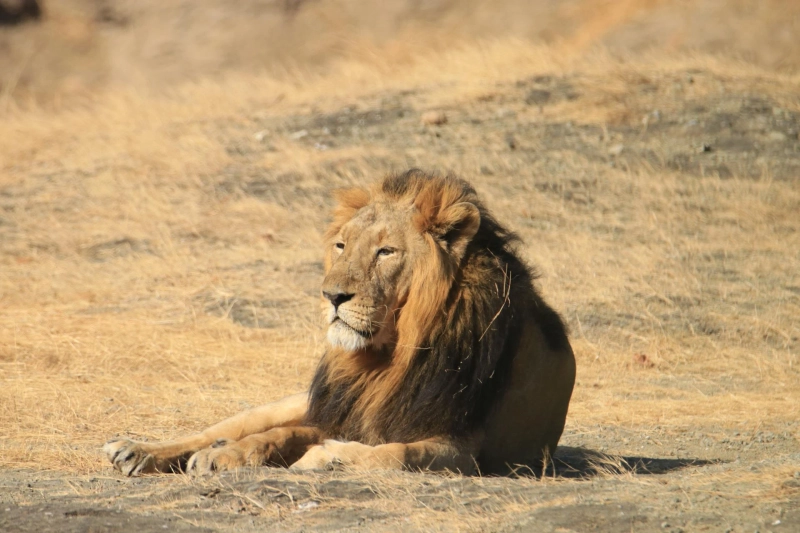
Nestled in the western Indian state of Gujarat, Gir National Park is more than just a wildlife sanctuary—it is the last bastion of the majestic Asiatic lion (Panthera leo persica). Spread across 1,412 square kilometers, this protected area has become a global model for species conservation. From habitat preservation to community involvement and scientific research, Gir’s comprehensive approach has played a critical role in bringing the Asiatic lion back from the brink of extinction.
Whether you’re a wildlife enthusiast, a conservationist, or a curious traveler staying at a peaceful resort in Sasangir, understanding Gir’s contribution to lion conservation adds immense value to your visit. This blog explores the park’s pivotal role in ensuring the survival and growth of one of the world’s rarest big cats.
The History of Asiatic Lion Decline
At the turn of the 20th century, the Asiatic lion population had plummeted to fewer than 20 individuals due to excessive hunting, poaching, habitat loss, and human-wildlife conflict. Once ranging across West Asia and Northern India, these lions were nearly wiped out, with Gir being their last remaining habitat.
Recognizing the urgency, the Nawab of Junagadh placed a hunting ban and started protective efforts, laying the foundation for what would later become a large-scale conservation mission supported by the Indian government and global wildlife organizations.
Why Gir Was Chosen as the Lion’s Last Refuge
Gir’s semi-arid climate, open scrubland, dry deciduous forests, and perennial water sources provide an ideal ecosystem for Asiatic lions. The availability of natural prey like deer, antelope, and wild boar also makes it a suitable home.
This unique habitat not only supports the lions but also promotes biodiversity, making it a vibrant ecosystem where many species coexist, including leopards, hyenas, and over 300 types of birds.
Conservation Measures That Made a Difference
1. Strict Protection and Monitoring
The Gujarat Forest Department, with support from NGOs and wildlife researchers, has implemented 24/7 surveillance systems, anti-poaching squads, and a comprehensive database to track individual lions. Radio collars, camera traps, and microchipping help keep an eye on their movement and health status.
2. Community Involvement
One of the standout features of conservation in Gir has been the involvement of local communities, especially the Maldharis, traditional cattle-herding tribes who live in harmony with nature. Several resettlement programs have provided alternative livelihoods to reduce grazing pressure within the forest, helping minimize human-animal conflicts.
These communities are now active partners in conservation, acting as informants and guides who share valuable knowledge of lion movements and behavior.
3. Habitat Expansion and Corridor Creation
To reduce overcrowding and genetic isolation, conservationists have been working on creating wildlife corridors to connect Gir with surrounding sanctuaries like Girnar, Pania, and Mitiyala. These corridors allow lions to roam more freely, promoting natural breeding and healthier populations.
4. Scientific Research and Veterinary Care
Gir is home to the Lion Hospital in Sasan Gir, which offers advanced veterinary services and emergency care for injured or diseased lions. Regular health check-ups, vaccinations, and deworming campaigns ensure the well-being of the big cats.
Researchers continue to study lion genetics, disease patterns, and ecological behaviors to better tailor conservation strategies for long-term sustainability.
Gir’s Global Conservation Impact
The Asiatic lion conservation model followed in Gir is globally recognized for its effectiveness. As of the latest census, the lion population in and around Gir has grown to over 670 individuals, a significant rise from its historic low.
This success has not only brought pride to India but also positioned Gir as a case study in successful species revival. Governments, NGOs, and conservationists from around the world study Gir’s methods to replicate similar initiatives elsewhere.
Ecotourism and Responsible Travel
The growth in wildlife tourism has supported conservation by increasing awareness and generating funds. However, it’s essential that tourism remains sustainable and controlled to avoid disturbing the natural balance.
Visitors looking to explore this iconic reserve can do so while being part of the conservation story. Choosing eco-conscious accommodations, following safari guidelines, and respecting the natural environment are small actions that collectively make a big difference.
For travelers, staying at a resort in Sasangir like Aranya Gir Lion Resort offers more than just comfort. It provides proximity to the park, opportunities for guided safaris, and educational experiences that deepen one’s understanding of the region’s ecological importance.
Future Challenges and Opportunities
Despite many achievements, challenges still remain. Disease outbreaks, climate change, road encroachments, and shrinking buffer zones pose ongoing threats to the long-term survival of the Asiatic lion. Moreover, genetic bottlenecking—resulting from a single, isolated population—raises concerns for the species’ long-term resilience.
To tackle these, experts have suggested:
-
Establishing a second lion population in a different region to prevent catastrophic loss.
-
Strengthening existing corridors for freer animal movement.
-
Investing in advanced veterinary research and genome mapping.
-
Enhancing community-based conservation education.
Continued collaboration between government bodies, scientists, and the public is essential for these efforts to succeed.
Conclusion
Gir National Park is not just the pride of Gujarat—it is a symbol of hope in the global fight to save endangered species. Through a balanced approach involving protection, research, local participation, and responsible tourism, Gir has carved a path forward for conservation around the world.
For those planning to experience this marvel firsthand, booking your stay at a trusted resort in Sasangir like Aranya Gir Lion Resort will allow you to immerse yourself in both the natural wonders and the inspiring conservation legacy of Gir.
Whether you’re spotting a lion in the wild or learning about the park’s history from a local guide, every moment spent here is a reminder of what is possible when nature and humanity work together.